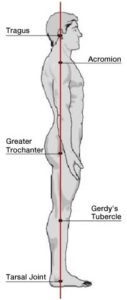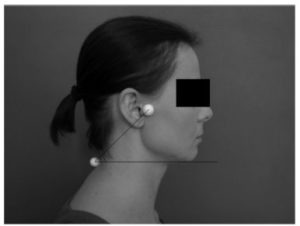Postural Analysis / Assessment
Postural Analysis / Assessment can be defined as the evaluation of various body parts of an individual in a position in an integrated manner in relation to ideal posture. Posture can be assessed in static as well as while performing sporting activities (dynamic) with modern techniques.
Postural assessment forms the very basic of Physiotherapy assessment. The moment the patient walks into the clinic, postural assessments starts there and then. Posture analysis is an important tool that helps assess the reasons behind various sports injuries and life-style related problems. The deviation from normal posture puts stress on structures that maintain the normal alignment of the neck, back, upper and lower limbs. There are several methods of Postural analysis in Physiotherapy, some of them are mentioned below.
- Visual observation method
This is the commonest method used for postural analysis in clinical practice. It has the advantage that it doesn’t require any equipment though quantitative analysis is not possible in this method. Thus, minor postural alterations cannot be detected. Major postural deviations can be easily identified with this method and correctional measures can be undertaken.
- Plumb Line Method
This is again a common method used for postural assessment. A plumb line is used for posture evaluation. The physiotherapist looks for deviation from the ideal alignment inside and back views, with a plumb line being placed along the midline of the body. The disadvantage associated with this method is again it cannot provide quantitative data of deviation from normal.

Fig. – The plumb line corresponds with the line of gravity (the red color vertical line) as shown in the picture and landmarks it should ideally pass through in a normal well-aligned posture. Any deviation from this is considered abnormal.
- Goniometry
Goniometers are extensively used in Physiotherapy practice. It is not only used to measure the joint ROM manually but also to assess the posture like neck inclination angle, cranial rotational angle, etc. this is a highly useful tool as it possesses good to excellent reliability.

- Photographic and Digitalization Method
This method led to the modernization of postural assessment, since it provided quantifiable and reproducible data, along with the advantages of being simple and convenient, which made it very popular. This method is in use for a long time. This method is very helpful in analyzing dynamic postures in various athletes to incorporate better techniques to enhance performance.

(Analysis of Usain bolt’s running posture)
- Radiographic method
This is rated as the “gold standard” method for evaluation of postural deviation and is one of the latest methods. Though it possesses the risk of exposure to harmful radiations and is costly at the same time. The noninvasive methods mentioned above are more preferable for postural analysis.

- Photogrammetric method
This method of posture evaluation has evolved or can be said to be a modified version of the photographic and digitization method. In this method, photographs of the subjects are taken in different planes with a camera that is mounted on a leveled tripod stand and is placed at a distance from the subjects. The photographs taken are analyzed with the help of a computer software program for various angular variations from normal. This method also provides reliable and quantifiable data which can be used for calculation of results post-treatment or for research purposes. It can be used to measuring head posture, shoulder posture, cervical lordosis, thoracic kyphosis, lumbar lordosis, lower limb posture, and pelvic tilt.

Treatment at Physiotherapy Clinic in Dwarka emphasizes postural correction in almost all life-style related issues and sports-related injury. We help sports personal identify and work on weaker techniques that may be causing the symptoms. In recent times lifestyle-related issues are at an all-time high owing to changing work style. Most of the time we see people glued to their gadgets in various abnormal postures. We try to analyze these variations in posture and work on correcting them. We also provide the necessary work-related ergonomic advice to minimize the problem and to avoid it in the future.
Postural care
If you are used to sustained work (household/ office/traveling) in a bad posture, you are susceptible to backache, neck ache, and other sorts of postural pains. The following Links may be useful to you-





